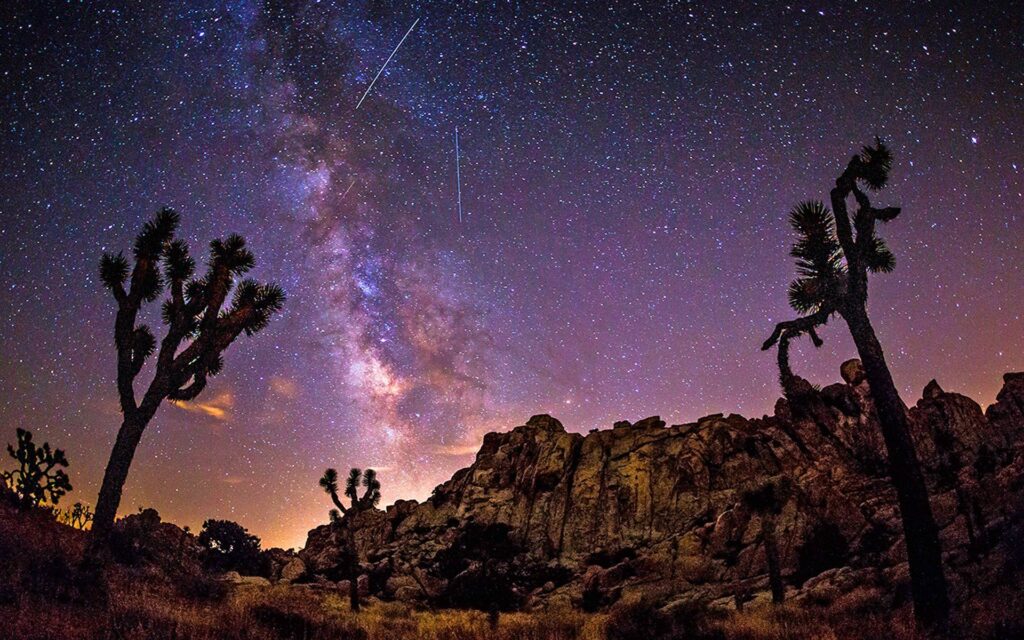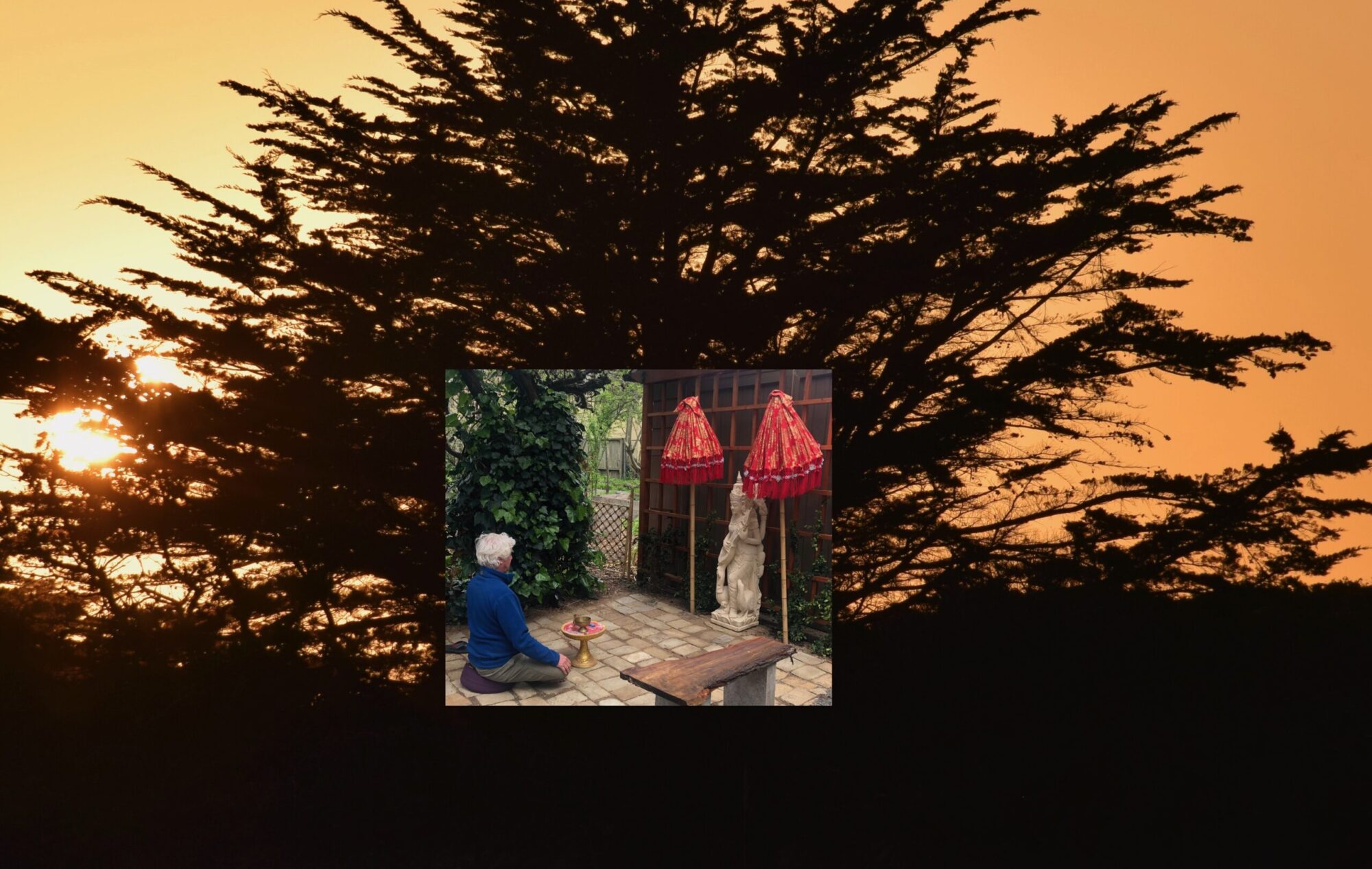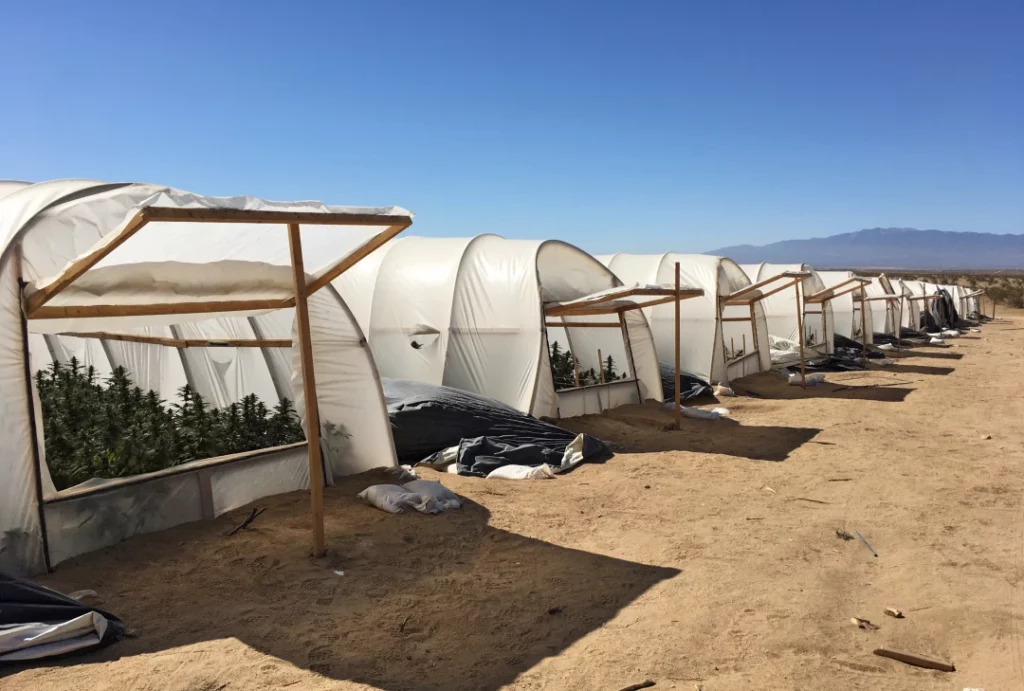
A place dreaded by PCT hikers is the 20+ mile stretch hiking along the Los Angeles Aqueduct through the scorching Mojave Desert where there are no water holes and the sand burns through your shoes. But I wasn’t having any problems at all because I was deliriously high off the fumes from the more than 1,000 pot farms in this area.
Hiking along the aqueduct is a weird diversion from the single-track trail I had walked on up to this point. The big pipe sucks water from the Owens Valley into thirsty Los Angeles, destroying wildlife habitat, tribal lands and communities in its wake. But who the hell cared because even though the air smelled skunky, I was hiking like a maniac, and giggling at my own jokes and eventually feeling a bit peckish. So, I sat down on the cement road topping the aqueduct and pulled out my food bag. I was ravenous, and ate not only a tortilla and tuna appetizer, but also two freeze-dried meals (Meat Ball Ravioli and Pad Thai) followed by a dessert of chocolate and trail mix.
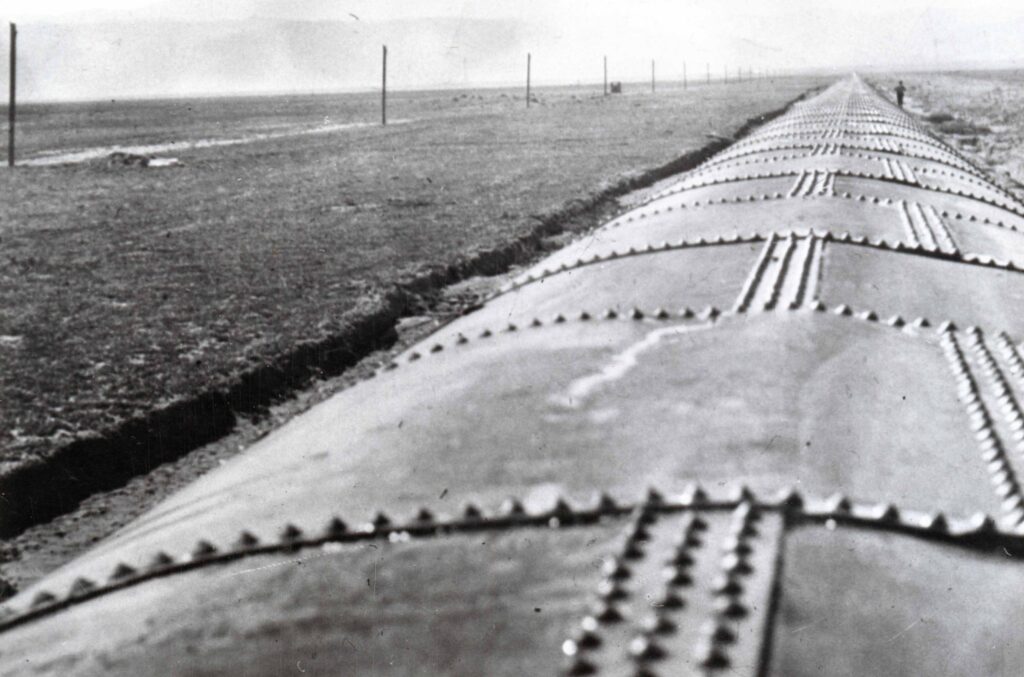
I gained some elevation after my feast and began to see that the desert had been invaded by dozens of white plastic greenhouses. It was sobering. I kept walking as night fell and the stars emerged, but then the spotlights turned on, and the desert became a forest of brightly lit shopping malls. And then the trucks arrived. About every 15-minutes you could hear an engine roaring as a truck careened down the dirt road next to the aqueduct. I later learned the trucks were hauling fertilizer to the farms, and taking the finished product to market. Fortunately, because of the engine noise and the glare from the headlights, I had plenty of time to jump off the road to avoid being hit. These drivers could give a rip, and their commercial mission was far more important than any collateral damage they might cause to a careless hiker.
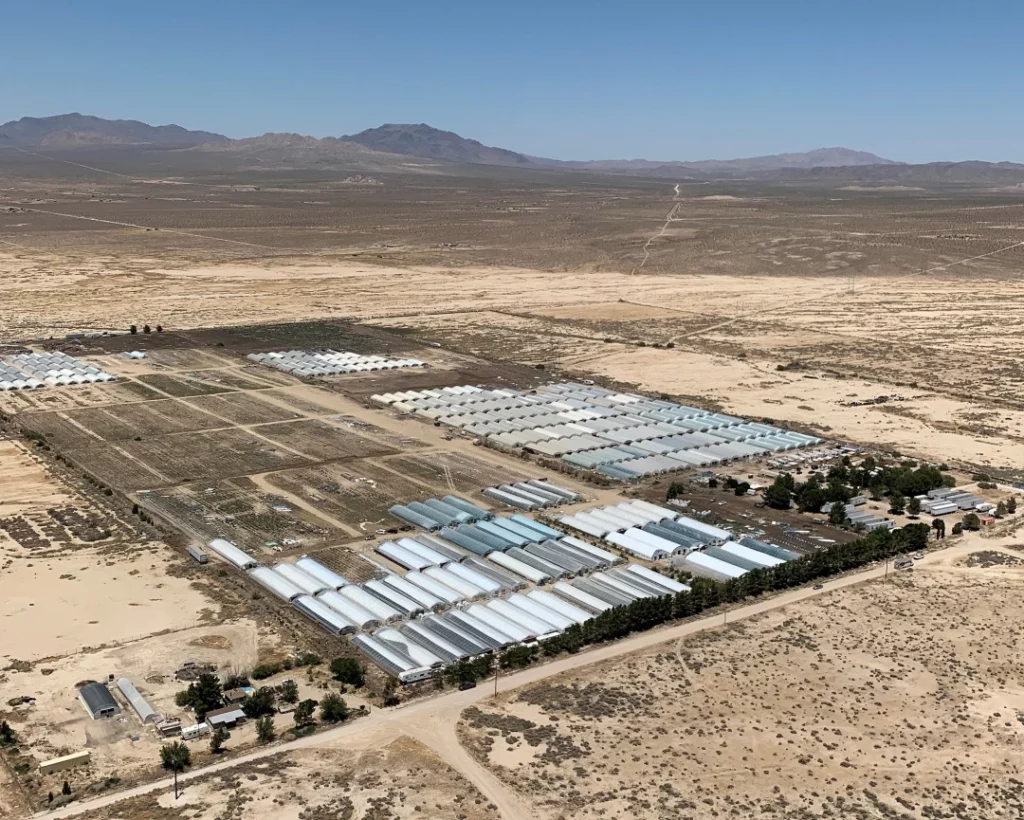
Hikers aren’t the only collateral damage these illegal pot farms are causing to the desert environment and the communities here. California legalized weed a few years back. Farmers are supposed to obtain permits to grow pot, obey environmental laws, and pay taxes to local and state governments. That’s not how it gets done for much of the weed grown, sold and smoked in the state. A Los Angeles Times story reported that there are more than a thousand unlicensed cannabis grows in this part of the desert. They are causing havoc. It takes a lot of water (150 gallons) to grow one pound of weed, and each of these farms cultivates thousands of plants. Add that all up, and these weed growers are sucking up tens millions of gallons of water from the desert…which by definition is a place where water is scarce. They also wantonly destroy wildlife habitat in their thirst for profit threatening critters like the desert tortoise. And if you live or walk by these fields you are assaulted by the skunky stench.
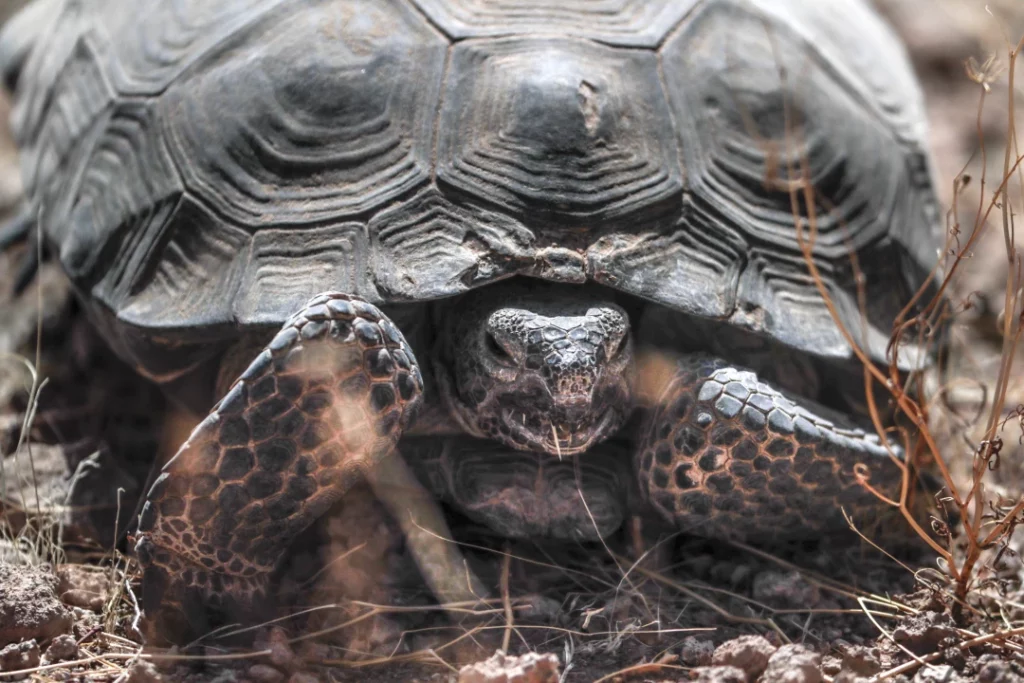
What’s even worse than the environmental degradation is how many of these growers treat their workers. According to the Times story, many of these grows shanghai workers from south of the border and force them to labor in despicable conditions. In fact, many of these illegal operations are run by the same gangs who run the drug trade in Mexico. Criminal organizations from Russia, Laos and Cambodia are also getting in on the action.
I didn’t know any of this until after I had left the trail. Frankly, looking at the farms, it was an interesting diversion from the tedium of hiking day-after day through the desert. Around midnight I felt tired, and found a spot far off the road to cowboy camp for the night. I could still faintly hear the trucks, but no lights were visible and that allowed me to see the night sky. It was universe showtime with constellations, shooting stars, and the dense Milky Way.
